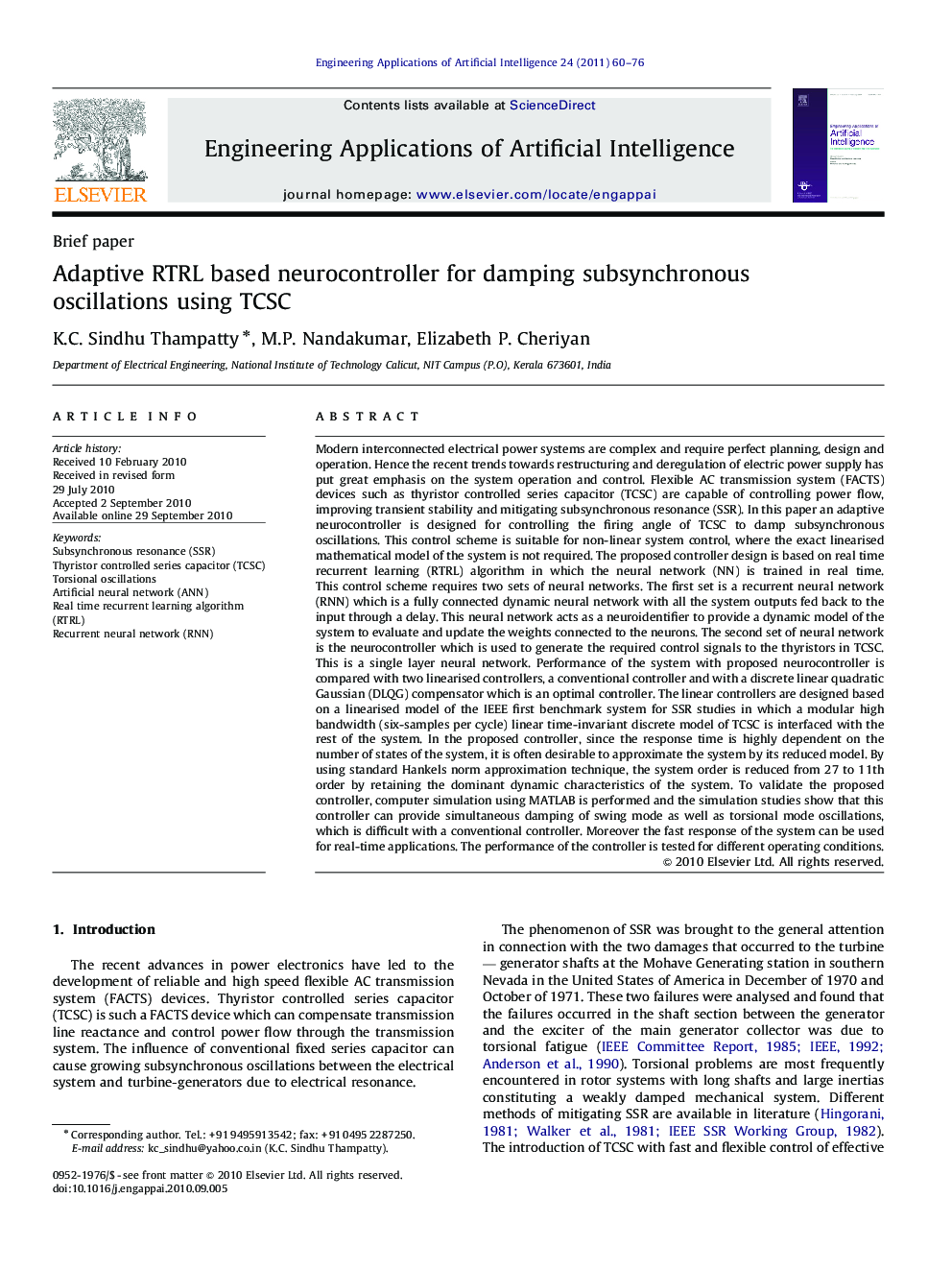| کد مقاله | کد نشریه | سال انتشار | مقاله انگلیسی | نسخه تمام متن |
|---|---|---|---|---|
| 381472 | 1437477 | 2011 | 17 صفحه PDF | دانلود رایگان |

Modern interconnected electrical power systems are complex and require perfect planning, design and operation. Hence the recent trends towards restructuring and deregulation of electric power supply has put great emphasis on the system operation and control. Flexible AC transmission system (FACTS) devices such as thyristor controlled series capacitor (TCSC) are capable of controlling power flow, improving transient stability and mitigating subsynchronous resonance (SSR). In this paper an adaptive neurocontroller is designed for controlling the firing angle of TCSC to damp subsynchronous oscillations. This control scheme is suitable for non-linear system control, where the exact linearised mathematical model of the system is not required. The proposed controller design is based on real time recurrent learning (RTRL) algorithm in which the neural network (NN) is trained in real time. This control scheme requires two sets of neural networks. The first set is a recurrent neural network (RNN) which is a fully connected dynamic neural network with all the system outputs fed back to the input through a delay. This neural network acts as a neuroidentifier to provide a dynamic model of the system to evaluate and update the weights connected to the neurons. The second set of neural network is the neurocontroller which is used to generate the required control signals to the thyristors in TCSC. This is a single layer neural network. Performance of the system with proposed neurocontroller is compared with two linearised controllers, a conventional controller and with a discrete linear quadratic Gaussian (DLQG) compensator which is an optimal controller. The linear controllers are designed based on a linearised model of the IEEE first benchmark system for SSR studies in which a modular high bandwidth (six-samples per cycle) linear time-invariant discrete model of TCSC is interfaced with the rest of the system. In the proposed controller, since the response time is highly dependent on the number of states of the system, it is often desirable to approximate the system by its reduced model. By using standard Hankels norm approximation technique, the system order is reduced from 27 to 11th order by retaining the dominant dynamic characteristics of the system. To validate the proposed controller, computer simulation using MATLAB is performed and the simulation studies show that this controller can provide simultaneous damping of swing mode as well as torsional mode oscillations, which is difficult with a conventional controller. Moreover the fast response of the system can be used for real-time applications. The performance of the controller is tested for different operating conditions.
Journal: Engineering Applications of Artificial Intelligence - Volume 24, Issue 1, February 2011, Pages 60–76